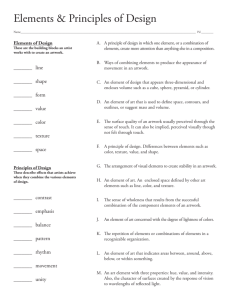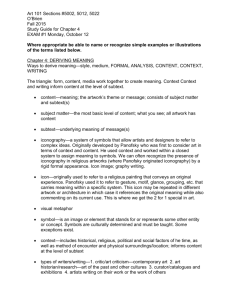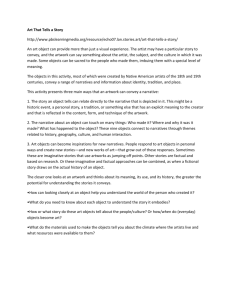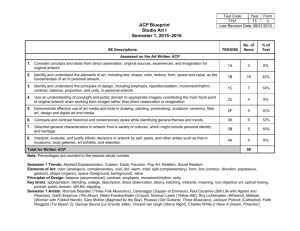Amanda Cook Art 260 2/16/13 Shahazia Silkander and Kiki Smi
advertisement
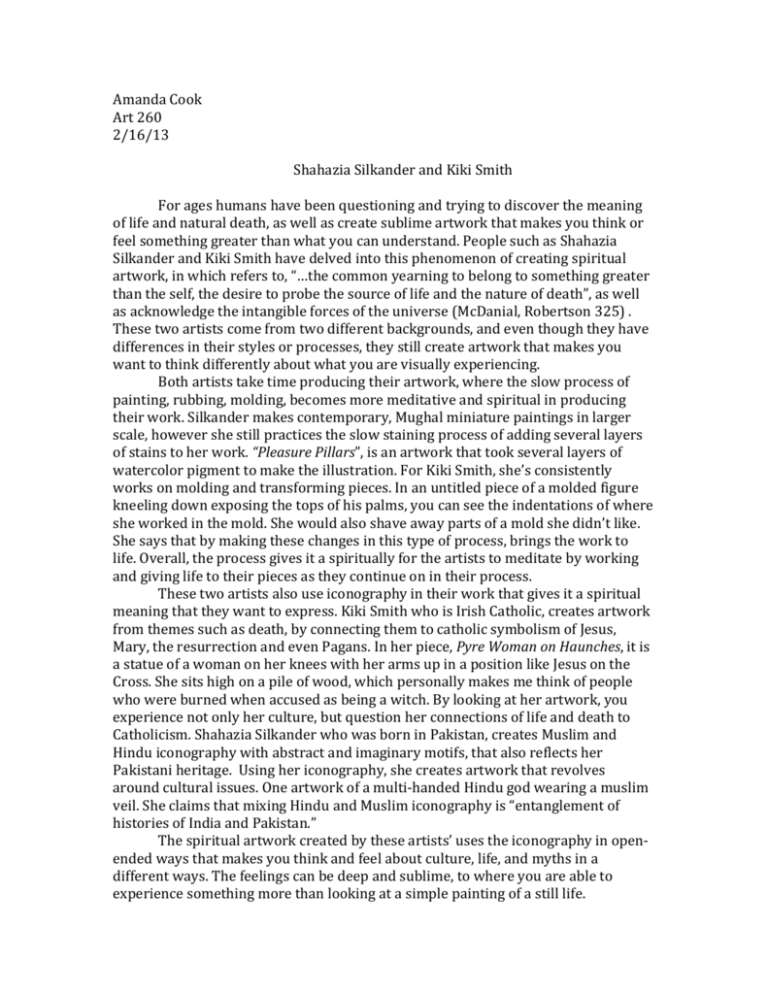
Amanda Cook Art 260 2/16/13 Shahazia Silkander and Kiki Smith For ages humans have been questioning and trying to discover the meaning of life and natural death, as well as create sublime artwork that makes you think or feel something greater than what you can understand. People such as Shahazia Silkander and Kiki Smith have delved into this phenomenon of creating spiritual artwork, in which refers to, “…the common yearning to belong to something greater than the self, the desire to probe the source of life and the nature of death”, as well as acknowledge the intangible forces of the universe (McDanial, Robertson 325) . These two artists come from two different backgrounds, and even though they have differences in their styles or processes, they still create artwork that makes you want to think differently about what you are visually experiencing. Both artists take time producing their artwork, where the slow process of painting, rubbing, molding, becomes more meditative and spiritual in producing their work. Silkander makes contemporary, Mughal miniature paintings in larger scale, however she still practices the slow staining process of adding several layers of stains to her work. “Pleasure Pillars”, is an artwork that took several layers of watercolor pigment to make the illustration. For Kiki Smith, she’s consistently works on molding and transforming pieces. In an untitled piece of a molded figure kneeling down exposing the tops of his palms, you can see the indentations of where she worked in the mold. She would also shave away parts of a mold she didn’t like. She says that by making these changes in this type of process, brings the work to life. Overall, the process gives it a spiritually for the artists to meditate by working and giving life to their pieces as they continue on in their process. These two artists also use iconography in their work that gives it a spiritual meaning that they want to express. Kiki Smith who is Irish Catholic, creates artwork from themes such as death, by connecting them to catholic symbolism of Jesus, Mary, the resurrection and even Pagans. In her piece, Pyre Woman on Haunches, it is a statue of a woman on her knees with her arms up in a position like Jesus on the Cross. She sits high on a pile of wood, which personally makes me think of people who were burned when accused as being a witch. By looking at her artwork, you experience not only her culture, but question her connections of life and death to Catholicism. Shahazia Silkander who was born in Pakistan, creates Muslim and Hindu iconography with abstract and imaginary motifs, that also reflects her Pakistani heritage. Using her iconography, she creates artwork that revolves around cultural issues. One artwork of a multi-­‐handed Hindu god wearing a muslim veil. She claims that mixing Hindu and Muslim iconography is “entanglement of histories of India and Pakistan.” The spiritual artwork created by these artists’ uses the iconography in open-­‐ ended ways that makes you think and feel about culture, life, and myths in a different ways. The feelings can be deep and sublime, to where you are able to experience something more than looking at a simple painting of a still life. Works Cited "About the Artist." Current Exhibition. N.p., n.d. Web. 15 Feb. 2013. "Kiki Smith." PBS. PBS, n.d. Web. 15 Feb. 2013. Robertson, Jean, and Craig McDaniel. Themes of Contemporary Art: Visual Art after 1980. 3rd ed. New York: Oxford UP, 2013. Print. "Shahzia Sikander." PBS. PBS, n.d. Web. 15 Feb. 2013. "Shahzia Sikander." Shahzia Sikander. N.p., n.d. Web. 15 Feb. 2013. "Shahzia Sikander." Lily Picot. N.p., n.d. Web. 15 Feb. 2013.



